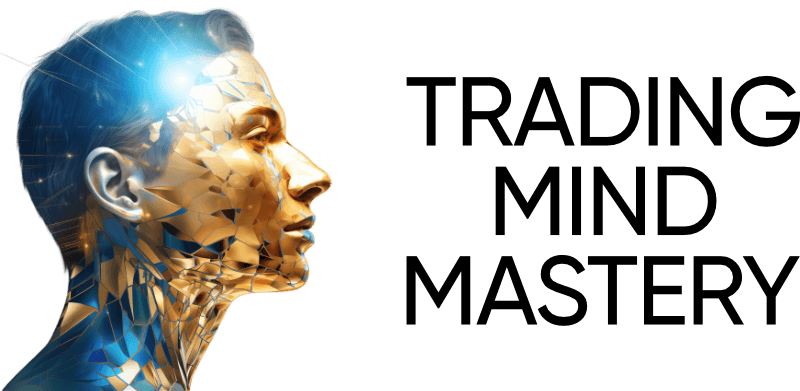At the heart of every successful trader is a mastery of the decision-making process that steers clear of the cacophony of market noise. Understanding the essence of decision-making within the trading arena sets apart the novices from the veterans. It is not just about the trades you make, but the thought process that leads to those actions. Cultivating refined decision-making skills is essential in the unpredictable tides of trading markets, where clarity of mind can lead to significant gains.
However, achieving such expertise is not solely about understanding charts and patterns, it also heavily relies on mental training trading and the subtle art of trading psychology. Traders must navigate through emotional currents and cognitive-bias whirlpools to arrive at decisions that are not only sound but also profitable. In pursuance of this mastery, traders embark on a journey that is as much about personal growth as it is about financial success.
Understanding the Trader’s Mindset
Trading is not just a test of financial acumen but also a psychological battle. The markets are not simply swayed by economic indicators or corporate news; they are also arenas where the emotional and mental strengths of the participants are constantly challenged. A deeper understanding of trading psychology and the importance of mental health in formulating strategies is crucial for those looking to excel in the fiercely competitive trading environment.
The Psychology Behind a Trade
At the core of every trade is a decision influenced by an array of psychological factors. Human cognition is vulnerable to biases and these biases often dictate how traders perceive and react to market information. Mental training in trading aims to equip traders with tools to identify their cognitive biases and develop strategies to make more informed decisions, free from the distortions of psychological influences.
Emotional Control and Mental Training
Emotional control is a fundamental aspect of dealing with the uncertainties of the market. Strong emotions, if not managed properly, can lead to impulsive decisions and detrimental trading behavior. Through mental training, traders can strengthen their emotional resilience, enabling them to remain calm and focused even during volatile trading sessions. Techniques such as mindfulness, deep breathing, and biofeedback are just a few methods traders use to maintain emotional equilibrium.
Common Mental Traps in Trading
Several common mental traps can ensnare even the most seasoned traders. Overconfidence can lead to taking excessive risks, while the fear of missing out (FOMO) may cause a trader to make hasty entries without due diligence. Acknowledging these traps is the first step towards avoiding them. Implementing checklists, setting predefined limits, and conducting post-trade evaluations are effective strategies for navigating these psychological pitfalls, ensuring that traders do not deviate from their planned trading course due to emotional biases.
The Importance of Mental Health in Trading
In the fast-paced world of finance, where fortunes can turn on a dime, the importance of mental health can’t be overstated. Traders must cultivate resilience and mental clarity to navigate turbulent markets effectively. Understanding the multifaceted relationship between stress and performance is the first step toward achieving a balanced and psychologically sound approach to trading.
Balancing Stress and Performance
It’s well-known in trading psychology that a certain level of stress can be stimulating, sharpening focus and enabling quick reactions necessary for success in the markets. However, when stress transcends this optimal level, it becomes a hindrance, clouding judgment and precipitating rash decisions. The delicate balance between healthy stress that promotes peak performance and excessive stress that impairs faculties is a linchpin in a trader’s mental well-being.
To strike this balance, traders are encouraged to identify stressors and develop coping mechanisms that prevent these factors from detracting from their mental health and trading strategy. Whether it’s through mindfulness techniques, physical exercise, or structured decompression time, recognizing and managing stress is pivotal in maintaining a clear head and sound decision-making ability.
Maintaining Mental Clarity
Mental clarity is the trader’s ace in the hole. It’s not just about being able to crunch numbers or predict patterns; it’s the capacity to remain composed and rational in the face of fear, excitement, and the unexpected. When one cultivates mental clarity, pitfalls like overtrading or succumbing to FOMO (Fear of Missing Out) are far less likely.
“A clear mind leads to better decisions, and a trader who makes better decisions becomes a leader in performance and profitability.”
Practices like regularly stepping away from the screen to reflect, journaling trade experiences, and rigorously adhering to a trading plan are ways to enhance mental clarity.
Wellness Strategies for Traders
Just as athletes employ wellness strategies to keep their bodies in peak condition, traders must adopt wellness strategies that preserve their greatest asset: their minds. These strategies span from physical health, such as maintaining a balanced diet and regular exercise, to mental exercises like meditation and deep-breathing techniques.
- Setting and adhering to strict sleep schedules to ensure ample rest.
- Establishing routines that encourage discipline and mental stamina.
- Leveraging periods of high performance to set realistic goals, thus avoiding burnout.
- Engaging in continual learning to adapt to the evolving nature of markets.
Employing these wellness strategies helps traders keep their mental health a priority, ensuring that they are prepared for challenges and equipped to capitalize on opportunities with a sound mind.
Essentials of the Decision-Making Process
The journey toward effective decision-making in the realm of trading is nuanced and multi-faceted. To navigate this journey, one must understand the underpinnings of a rational decision-making process and how each step contributes to the ultimate goal—a well-considered trade. By employing critical thinking at every juncture, we lay the groundwork for not just single instances of success, but a sustained ability to thrive in the fluidity of market environments.
- Identifying the Decision: At the outset, traders must pinpoint the precise decision that requires their attention, be it entering a new trade, exiting a position, or adjusting risk parameters.
- Gathering Information: Subsequently, an extensive compilation of relevant data is pivotal. This can include market trends, economic reports, and insights into geopolitical events that influence market dynamics.
- Considering the Outcomes: The next step involves a critical assessment of potential outcomes. Here, traders must ponder various scenarios to understand the spectrum of risks and rewards associated with the decision.
- Making the Decision: Armed with information and outcomes, the trader then commits to a course of action. This step encapsulates the essence of rational decision-making, which demands an absence of emotional bias.
- Evaluating the Decision: Post-decision analysis is vital. By reviewing their performance and the decision’s impact, traders can fine-tune their process, incorporating new learnings and insights for future trades.
At every phase, critical thinking acts as an anchor, ensuring that decisions are not swayed by the maelstrom of market sentiment but are the product of deliberate reasoning. This cornerstone of the decision-making process not only streamlines one’s trading approach but fortifies it against the often-mercurial nature of financial markets.
Sharpening Decision-Making Skills for Trading
To navigate the turbulent waters of the trading market, a trader must equip themselves with robust decision-making skills. These skills constitute the foundation of rational decision-making and problem-solving, separating successful traders from the rest. The following segments offer insights into honing these valuable skills and enhancing judgment ability, key to prosperous trading.
Rational Versus Reactive Choices
Making deliberate, thought-out decisions rather than impulsive, reactive ones can mean the difference between success and failure in trading. Let’s delve into the characteristics that distinguish rational decisions from their reactive counterparts:
- Rational Decisions: These are made after thorough analysis and careful consideration of both the risk and potential outcome, synonymous with problem-solving and strategic foresight.
- Reactive Decisions: These occur spontaneously, often under the influence of emotional responses or market noise, without the buffer of in-depth judgment ability.
Cultivating a mindset that prioritizes rational decision-making over-reactive responses can significantly improve trading results.
Strengthening Your Judgment Ability
Good judgment underpins all effective decision-making in trading. Enhancing this ability involves continuous learning and application of several strategies:
- Analyze past trades to understand where judgment was sound versus where emotion took the lead.
- Develop a structured problem-solving approach that can help you scrutinize all possible outcomes before executing a trade.
- Engage in focused training exercises, like scenario planning or simulations, to replicate the pressures of the markets and practice making decisions.
By reinforcing these strategies and committing to personal growth, traders can see a marked improvement in their decision-making skills and overall trading performances.
Strategies for Effective Decision-Making
Effective decision-making in trading is not a matter of intuition; it’s a structured and analytical process that can be significantly improved through strategic planning and preparation. A trader who is equipped with a well-conceived trading plan and a detailed checklist for pre-trade decisions stands a better chance of navigating the markets successfully and consistently.
Creating a Trading Plan
The foundation of solid decision-making strategies lies in the construction of a robust trading plan. A trading plan is not just a document—it’s a trader’s roadmap, encompassing their financial goals, risk tolerance levels, analysis methods, and criteria for entering and exiting trades. Crafting this plan requires a comprehensive approach that addresses market conditions, as well as personal competencies and restraints. Without a trading plan, traders risk being swayed by emotions, which can lead to sporadic and often detrimental trading behaviors.
Checklist for Pre-Trade Decisions
Before executing any trade, it is crucial to run through a pre-trade checklist that ensures all the requisite boxes are ticked. This list might include confirming that the trade aligns with the larger trading plan, assessing market conditions, setting stop-loss and take-profit levels, and evaluating the risk-to-reward ratio. Having such a checklist firmly places the trader in the driver’s seat, allowing for pre-trade decisions to be based on judicious criteria rather than whims or hasty judgments.
- Review the asset’s price action and volatility
- Analyze the current market trends and news that may impact the trade
- Ensure the trade aligns with your overall risk management strategy
- Calculate the potential risk and reward to establish proper position sizing
Incorporating these practices into daily trading routines can monumentally increase the probability of engaging in effective decision-making and can lead to more favorable trading outcomes.
Rational Decision-Making in Market Analysis
Embarking on the journey of market analysis, traders arm themselves with various tools and methodologies to forecast and strategize their trading moves. The science of rational decision-making in this realm relies heavily on both technical and fundamental analysis, as these approaches provide the bedrock for informed trading decisions. In this complex environment, it is paramount for traders to comprehend the nuances of these analyses and how they can be harmoniously integrated through data integration, further sharpening their competitive edge.
Technical Versus Fundamental Analysis
Technical analysis, with its charts and quantitative figures, serves as a roadmap of past market behavior to speculate future trends. By utilizing price patterns, volume, and similar statistical indicators, traders often endeavor to predict short-term market movements. In contrast, fundamental analysis dives deep into financial statements, global events, and industry trends aiming to ascertain a company’s intrinsic value and forecast long-term profitability. Both techniques, though distinct, are not mutually exclusive and often lead to more robust rational decision-making when combined.
Integrating Data for Smarter Decisions
The art of data integration casts a unifying thread that weaves together disparate sources of information into a cohesive narrative. By synthesizing insights from both technical and fundamental analyses, traders can compile a more holistic view of the market. This integration allows for the mitigation of risks and enhances the potential for accurate market forecasting. Understanding how to blend various data sets and analytical tools is essential for developing an overarching strategy that drives smarter, more informed decisions in the trading arena.
Decision-Making Techniques in High-Pressure Situations
The fast-paced environment of trading demands robust decision-making techniques and an adept understanding of trading psychology to effectively navigate high-stakes scenarios. By mastering emotional control and applying tailored high-pressure decision-making strategies, traders can significantly improve their performance under stress.
- One proven technique involves practicing mindfulness to maintain mental clarity in the face of market turmoil, allowing for more calculated and reasoned decisions.
- Another key approach is to embrace stoicism, a philosophy that encourages focusing on controllable elements while accepting the uncontrollable aspects of trading.
- Establishing a clear set of guidelines for risk management can also fortify a trader’s ability to make informed decisions with potential financial implications at the forefront.
Giving credence to the significance of high-pressure decision-making, strategic pauses are an underrated asset. These deliberate timeouts enable traders to reassess their strategies and confirm their next steps align with overall goals.
High-pressure situations often blur the lines between haste and speed, but the successful trader knows that speed is measured not by the pace but by the directness of the line. – Renowned Trading Psychologist
Incorporating a well-rehearsed decision-making framework can provide a psychological foothold during volatile market conditions. This scaffolding ensures that each decision, no matter how quickly it needs to be made, is grounded in a thought-out process rather than impulsive reactions.
- Start with identifying your immediate goals and weighing potential outcomes.
- Use technical indicators and current market data to inform your decision.
- Remain vigilant for emotional biases that could cloud your judgment.
- Execute the decision, then take notes for a post-analysis review.
Ultimately, excelling in high-pressure decision-making in trading is less about eliminating emotions and more about channeling them through a structured approach. Employing these techniques can help traders develop the resilience and decisiveness needed for success in the high-stakes world of trading.
Applying Decision-Making Models to Trading
Uncertainty is an inherent element of the trading environment, which necessitates the adoption of robust decision-making models to navigate market complexities. Traders aiming to cultivate a disciplined approach to the markets must consider selecting decision models that resonate with their unique trading strategy. Recognizing the appropriate framework can significantly enhance one’s ability to make informed and strategic decisions, ultimately impacting their trading performance.
Selecting the Right Model for Your Strategy
The pursuit of the right decision-making model involves a comprehensive analysis of various aspects of your trading style and objectives. Whether you rely on technical indicators or broader market fundamentals, the chosen model must align with your personal preferences and risk tolerance levels. Factors such as market volatility, trade duration, and financial goals play critical roles in determining the appropriate framework.
Pros and Cons of Popular Models
Each decision-making model comes with distinct model pros and cons, which must be evaluated before implementation. For instance, the Quantitative Analysis model excels in eliminating emotional bias but may not account for unpredicted market events. Conversely, the Qualitative Analysis model allows for flexibility and adaptability to market swings, at the risk of subjective bias. A thorough understanding of these advantages and drawbacks is paramount in selecting a model that not only complements your trading strategy but also mitigates potential pitfalls.
- Quantitative Analysis Model:
- Pros: Data-driven decision process, high objectivity, back-testing capabilities
- Cons: Over-reliance on historical data, potential for model overfitting
- Qualitative Analysis Model:
- Pros: Greater flexibility, incorporation of macroeconomic factors
- Cons: Vulnerable to trader’s cognitive biases, less empirical rigor
- Behavioral Decision Model:
- Pros: Accounts for psychological factors, adapts to market sentiment
- Cons: Inherently subjective, may conflict with empirical data
Selecting the decision-making model that optimally aligns with your trading strategy is an investment in your future as a trader. A critical examination of the model’s pros and cons will empower you to adopt a model that enhances both the consistency and performance of your trading endeavors.
Key Pillars of Critical Thinking for Traders
In the demanding world of trading, critical thinking is the beacon that guides through a sea of information to sound decision-making shores. It empowers traders with the capacity for problem-solving and the ability to execute a refined decision analysis. Embracing a mindset that leverages critical thinking principles is paramount, not just for survival but for thriving in the complex financial markets.
Evaluating Sources of Information
Evaluating information stands as a cornerstone of critical thinking. Traders must rigorously assess the reliability and relevance of data before allowing it to influence their strategies. This process involves scrutinizing the credibility of financial reports, the trustworthiness of news outlets, and the validity of market commentary. When a trader become adept at discerning quality information from the noise, they gain a significant edge in predicting market movements and making informed decisions.
Challenging Assumptions in Market Dynamics
Moreover, challenging assumptions is an exercise that prevents the retention of outdated beliefs that can cloud judgment. As market dynamics evolve, so should the trader’s perspective. The willingness to question market sentiments and test the resilience of one’s trading hypothesis is essential. By continually refining their approach and adapting to new information, traders reinforce their ability to navigate market tides with agility and acumen, thus embodying the essence of a critical thinker in the trading arena.









Leave a comment